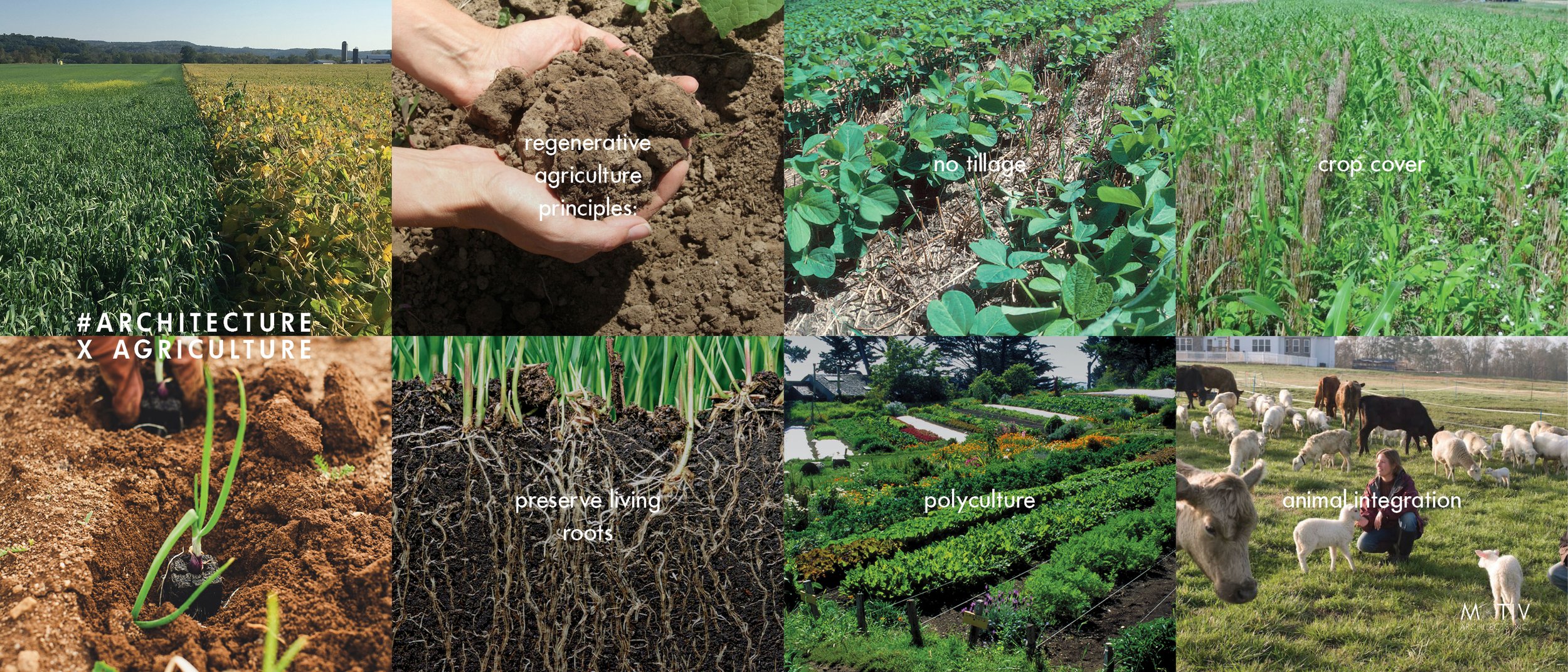Architecture x Agriculture x 6
Images clockwise: Henry Be, Midwestern BioAg, USDA/NRCS, Paul Jasa, Markus Spiske, Salk Institute, Helius Energy, Small Farm Nation
This is part 6 in a series that we originally hosted on Instagram where we shared ongoing research, precedents, and agriculture related practices that have inspired us at MOTIV.
On this week's series we will be outlining regenerative agriculture, it's key principles, and how it can help mitigate the climate crisis.
Agriculture is currently the cause of at least 1/3 of carbon emissions worldwide. Our modern industrial agricultural system depletes soil, releases more CO2 into the atmosphere, and contributes to deforestation.
It hasn’t always been this way… regenerative agriculture is a system of farming techniques that aim to rehabilitate/enhance the entire ecosystem of the farm. This is done by prioritizing soil health, water management, and natural fertilizer. A global shift to regenerative agriculture has the potential to reduce greenhouse gas emissions, increase soil carbon stock, increase resilience and yields during extreme weather including drought, preserve traditional knowledge, foster biodiversity and improve the nutrition of the food we eat.
Some key principles of regenerative farming include:
a. least disturbance
Chemical usage kills soil microbes and can kill many other bugs and plants that positively contribute to a balanced ecosystem. Tilling fractures soil structure; while releasing more carbon into the atmosphere. It reduces the soil's water holding capacity, making it vulnerable to erosion. A healthy soil biome is important for nutrient cycling and suppressing plant diseases, and no-till soils have better structure, nutrient cycling and organic matter content.
b. soil armor
Bare soil is vulnerable to erosion. Protecting soil with cover crops such as living plants, crop residue, wood chips, or mulch ensures soil health, minimizes runoff, and increases biodiversity.
c. maximize period of living root growth
Keep living roots in soil as long as possible. Roots nourish microorganisms, which in turn, feed plants. The cycle continues as plants pump carbon from the air into the soil, and microorganisms store it as carbon rich soil. The deeper roots grow, the longer they can store carbon.
d. maximize plant diversity
Monoculture is the practice of planting a single crop in a field, whereas polyculture encourages the planting of multiple crops. These include principles such as companion planting, forest farming, and the use of beneficial weeds, often replacing synthetic chemicals with natural processes.
e. animal integration
Livestock integration can substantially increase organic matter in soil — their roles include consuming cover crops and providing the best natural fertilizer. A more sustainable principle is to follow multi-species grazing, which entails moving different livestock in sequence in a leader-follower system. This allows the pasture to have time to recover and can act as parasite control for different species.
Some local regenerative farm examples include:
And a little further afield:
Joel Salatin’s Polyface farm

